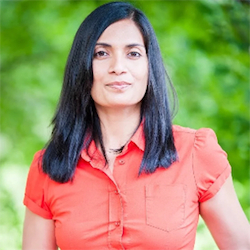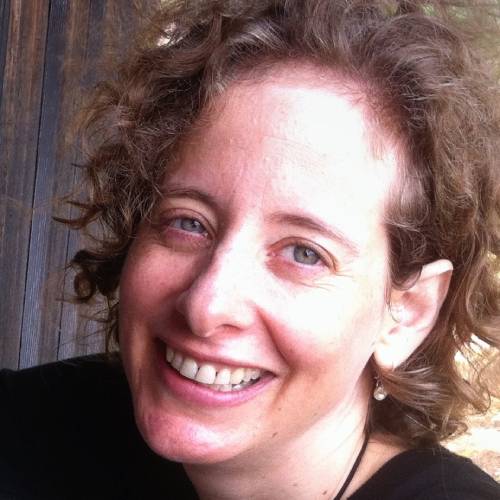Moving away from traditional research methods can feel like entering uncharted waters. Four scholars describe what you may find.
Collaborative research that brings together researchers and practitioners is messy. Action research, engaged scholarship, and related approaches must find ways to work with significant differences between practitioners and researchers.
The Methods sections of journal articles are sterilized from the full realities of collaborative research. We rarely read about the different expectations involved in such research and how researchers balanced rigour and relevance.
This omission is a missed opportunity. Such reflections can guide other scholars in undertaking research that impacts practice and generates novel insights. Deeper exploration of challenges and opportunities in collaborative research can also push methodological frontiers.
At the 2018 Academy of Management Meeting in Chicago, four researchers experienced in co-creation shared a full picture of their experience. Stephanie Bertels (Simon Fraser University), Lori DiVito (Amsterdam School of International Business), Tima Bansal (Ivey Business School) and Arne Carlsen (BI Norwegian Business School) spoke on the panel, “Conducting Collaborative Research with Practitioners: Research Journeys and Methodological Innovations.” Garima Sharma and Sara Rynes facilitated the panel discussion.
Here are their individual stories and some shared recommendations. (Their comments have been condensed and edited.)
Stephanie Bertels: The Embedding Project
What drives the project
The Embedding Project has been an eight-year journey. The project began as a systematic review for the Network for Business Sustainability, seeking to identify rigorous knowledge about the practices that help to embed sustainability. The project has evolved into a community of three dozen of the world’s biggest companies, their sustainability teams, and their executives — all looking at how to embed sustainability across operations and decision making. Our companies meet regularly in regional peer-to-peer networks.
The researchers involved in the project try to do what researchers are good at and do it in service of the larger goal of helping practitioners be their best selves. One of the things that we have realized is that managers are very, very short on time. They have a huge interest in engaging with knowledge, but a limited ability to take the time to really discern among that knowledge. That’s something that we, as researchers, do well.
For instance, many of the companies we work with wanted to understand how to embed sustainability into their core strategy processes. But they were frustrated because there were all these different approaches — the Science Based Target Initiative, The Natural Step, the Future-Fit Benchmark, Net Positive — and the companies didn’t understand how these tools came together. The companies wanted a framework, a way to think about how to do this. Researchers are good at going out, understanding ideas, seeing how they fit together. So, we were able to develop that framework for them.
What co-creation looks like
In the Embedding Project, we find that it is important to test our ideas and then refine them. We develop resources in a highly iterative process. Each company in the peer-to-peer network has gone through an assessment of their practices to understand their maturity when it comes to embedding sustainability. Then we think together, as a community, what could we do that would move each company forward?
What I try to emphasize in the work that we do with practitioners is this suspended state of provisionality. We come to them with, in our language, boundary objects; in their language, pictures. Then we give them these objects and we walk away. We allow them to play with these provisional frameworks, to pull them apart and to question them. Much of the work that we are currently undertaking has been driven by these practitioners’ lived experience.
What are project impacts
By undertaking assessments in dozens of firms over multiple time periods, we have assembled a real-time comparative data set on embedding sustainability that helps us contribute to both research and practice. Working with this data and with the input of our partners, we have created seven guidebooks and almost 50 case studies that are all available for free on the Embedding Project’s website resource page. As a result, we are regularly approached by companies to provide input into their strategy processes and goal setting.
The project is also having an impact on research. For example, our recent work exploring governance and how to influence your CEO draws on over 300 interviews with CEOs, board chairs, directors, and senior executives of global companies. We gained access because influential practitioners valued what we were doing and were willing to extend their influence on our behalf. We have created a virtuous circle that makes room for other researchers to engage and advance our understanding of embedding sustainability.
Lori DiVito: Alliance for Responsible Denim
What drives the project
The Alliance for Responsible Denim began in 2016 and is a collaboration of multiple stakeholders. It started with just competitors, but we gradually added different actors from different parts of the supply chain. It’s now 52 members; it started with 14.
This project was also seeded from the Network for Business Sustainability. I received a grant from Tima to look at how competitors collaborate together for sustainability. And at the same time, my department at the Amsterdam University of Applied Sciences was talking about applying for a grant for field-based research. I thought I could build on my work with NBS.
The project came about through ties — you need to have a relationship with the field somehow. I met my main contact at an event; she worked for an NGO and she was active in the denim industry. The NGO was doing benchmarks on the wet processing part of apparel and I was fascinated. We talked every six months and she’d fill me in on what she was doing and I’d fill her in.
When I was putting together the proposal, I asked her, “Do you think that competitors would want to work together?” She wasn’t sure, but she’s with apparel firms nearly every day, so she asked them for me. Slowly, she would come back to me and say “Yeah, actually I hear that they’re interested.” Some of the forefront brands in the denim industry were interested, and then curiosity pulled everybody else together.
What co-creation looks like
I think of this project as participant-based research, or action research. We started in 2016 with a kickoff where everyone in the collaboration signed a pair of jeans to show symbolically how we were committed to creating sustainable denim. We had very coordinated meetings, sometimes with invited panels of experts. We also had breakout sessions to work out details or share experiences more closely. For example, we organized ‘doctor visits’ where chemical experts and a manufacturer met with brand representatives privately to discuss their wash recipes and what they could do to improve them.
The research team includes two senior researchers and three research assistants, all part time. The project also has a steering committee and two working groups, on post-consumer recycled denim and garment finishing chemicals. Each working group has its own goals and is facilitated by a different NGO. We also hired somebody to support the NGOs. This central person, the project manager, talks to the brands, works between the NGOs and supports them in all their activities, and then also works with me.
My hope was that I could remove myself and observe. I wanted to understand how competitors come together, align their needs, and achieve collective goals. But I ended up getting quite involved in the project. My involvement happened because the project manager worked for me and would ask about various day-to-day issues. Also, most of the brands saw me as the leader. I held the budget, so I had to give approval for a lot of things that happened.
I also had to intervene at a certain point, because we were collecting data from all of the firms and I knew that one of the working groups was going down the wrong track. This was a dilemma for me: do I intervene, which is not what we traditionally do as researchers, or do I just let it go and the project could fall apart. I ended up intervening with the NGO and changing the course of this working group. I presented some analysis that I thought was necessary. The NGO couldn’t do it; it wasn’t their preferred path. I realized at that point that we took a lot of authority away from the NGO and that ended up being a conflict between us.
What are project impacts
We have started writing a few academic papers, so there is clearly a path to impact on research.
Regarding impact on practice: we know that some of the brands have changed their products’ washing process in terms of chemicals and water use. So that’s clear and measurable impact. Brands are also developing larger collections using post-consumer recycled denim.
Suppliers were initially outside the Alliance but we brought them into meetings and they started recognizing the brands’ interest in sustainability. We have held industry-wide events and suppliers come with post-consumer recycled denim fabrics that meet the specifications developed in the Alliance.
So the project is creating change with individual brands and at the industry level. We haven’t yet created a general output like a framework that can be used by all. But we have just started and hope to build that over time.
Tima Bansal: The Innovation Project
What drives the project
The Network for Business Sustainability (NBS) was funded 12 years ago by the Canadian government, with the goal of having impact on practice. NBS was built on the premise that simply translating research into managerial language would make the research helpful to managers. We believed that researchers needed to ask better questions and then not just offer a single study addressing the question, but synthesize the body of work related to the question. So, we asked managers what questions they had and we commissioned researchers to systematically review the prior research that could answer the question.
In 2012, NBS commissioned a systematic review on “innovating for sustainability.” The researchers came up with a really good typology of innovation outcomes. But we realized that managers wanted not just to know what innovations exist, but how to innovate.
So, I decided to embark on a new major study, also funded by the Canadian government, that unpacked the innovation process. The research team comprised Joel Gehman, Sylvia Grewatsch, and me. We attracted a group of organizations that included three oil sands companies, two government departments, and a collaborative representing seven other major oil sands companies. These corporate partners wanted to know how their sustainability-related technologies could be deployed or fail faster.
We decided to undertake the research over five stages. We collected corporate documentation, analysed it, prepared three case studies, interviewed executives, analyzed the data, and then presented it. It sounds very linear, but at each stage there was wide consultation and we brought researchers and managers together. So it was intended to be very collaborative.
And, as we engaged in the co-creation process with managers, we realized that visuals, or objects, encouraged conversations between our research team and managers. It was very generative when we tried to say, “Let’s work through the data or findings.” We’d share with the managers as we were building these objects, so the they could tell us what they were seeing.
I believe we came to a good place, building a model that essentially answered their questions. The model we co-created will have considerable utility in both research and practice.
However, there were challenges. Maybe most significantly, all of the partners experienced employee turnover or mergers and acquisitions. Although our original partners were excited about the project, the new people on the project were less committed. Second, we found that the topic of sustainability in the oil sands was rife with opinions and defensiveness. People resisted some of our findings, as they could be seen as critical of the industry. Third, the high engagement with the project partners was time consuming. Several interim deliverables took a considerable amount of time and had hard deadlines; the frequent deadlines increased stress. Finally, we built a Cadillac and I wonder if the managers were simply looking for a road map. Our machine could perform multiple functions, from describing what they are doing to prescribing what they should be doing. They wanted something that could simply tell them what to do next.
What are project impacts
We provided a framework that was prescriptive for practice but still analytically deep. It’s practically relevant because it will help firms build a shared understanding because they can map their own technologies. They can learn from their prior successes and failures and see gaps.
We now have 60 interviews on innovation, and it’s really hard to get that kind of data. We have 100 corporate documents that are quite sensitive. We have two research ideas from this that we believe will ultimately be publishable in good journals.
Make every exchange a co-creation: Arne Carlsen
Traditionally, practitioners are shoehorned into a stereotype where they are incapable of speaking our language or not very interested in research. We do research, the practitioners are data.
The philosopher Emmanuel Levinas talks about how we can open ourselves to the teaching of the other. We need to talk about research as a richer way of participation, where researcher can also share things and invite practitioners to join in sensemaking such that you establish yourself and the other as co-subjects in the same enquiry.
My co-author Carl Rhodes and I see research through the ethos of what we called generous reciprocity. Traditionally, you establish yourself and the researched as trading partners across a divide. We think of turning to the other with radical openness and exposing our own vulnerability, we don’t really expect anything in return. You make your interpretations visible to the other in conversation in such a way that he or she may get to object and engage in analytical work in what’s going on. Our own research has been at its best when we have been closest to such an approach.
Many ways of co-creating with practitioners exist
Involving practitioners in your interpretations does not have to be a big thing and is increasingly recognized as a key part of the research process. I hope that 10 years from now, we will have a rich set of practices and vocabulary on this. These ways can emerge from making yourself, as a researcher, open and available to practitioners.
Let me share two brief examples of how I have tried to involve practitioners as knowledge partners.
First: Toward the end of an interview, I would say, “I have some understanding of how what I think you’re telling me relates to what other people I have spoken with have said. Would you like me to share my understanding?” At that point, if I have qualified myself as a conversational partner, it’s like a whole new world opens up. My interviewee and I look at things together and sometimes that has instigated another hour of discussion. This is when it gets interesting and we just go deeper and deeper.
The other example is about holding a workshop where you feed insights back to the practitioners. We have struggled with how to do it. PowerPoint presentations don’t work, feeding them academic paper doesn’t work — there may be one out of 30 who would read through the paper. So we experimented with bringing in tentative insights on A5 cards — see our paper called Playing the cards. We gave the people in the company this deck of cards to play with. The cards have a picture on the backside, a tentative understanding of an aspect of the practice on the other side. We asked, “How does this relate to you? Which of these resonates with how you see your own practice?”
Those cards triggered a level of participation and playfulness we have never seen in any other process. It’s like we, the researchers, were ghosts. They didn’t care about us once they got the deck of cards — they just started shuffling and scribbling and discussing. And being witness to that discussion afterwards — for us, it’s a whole new level of richness of data.
Lots of other examples exist. Harrison and Rouse (2015) have a fine paper in Academy of Management Journal (AMJ) where they include focus group interviews on tentative findings as part of their methodology write-up. Another good source is the work of Cheryl Mattingly, an anthropologist who wrote this wonderful award-winning book from her ethnographical study of occupational therapists, Healing dramas and clinical plots. In a section of this book (pp 17-18) she describes being cornered by a group of therapists who are anxious to know what she makes of their work.
In talking with them, Mattingly worries about “contamination” and possibly sounding foolish with her literary language and focus on terms like “therapeutic emplotment.” But she agree, reluctantly, to share some of her work. She first shares an interpretation of a treatment episode with therapists. To her surprise, they are captivated by her odd portrait and start offering additional examples and helping her think of implications. Mattingly, encouraged by this, continues sharing her analysis in local and national fora and ends up writing her first work for occupational therapists. The book becomes an undergraduate textbook in the profession. And all that just came from making oneself available, vulnerable and receptive.
Recommendations from the panel
Consider how others see your role
Stephanie Bertels: You must remember that you are not a consultant. The moment that you become a consultant is the moment that you have completely lost your authority as a researcher and your ability to take an independent stance. If you lose your ability to convene, you lose the trust and access that you have.
That’s why we’re so careful with the language that we use. We are a public benefit research project. Our companies are partners in delivering public knowledge. Our partners contribute to a common pool of funds and together we have conversations about how to spend that budget. That helps us steer clear of the focus on individual company benefit.
Because we are not consultants, our partners are willing to give more and be so much more transparent and reflexive about their own experiences, knowing that we’re not going to take it and turn it into private benefit and sell it to others. When they bring us in to speak with their executive team or their board or meet with their CEOs, they know what we say is coming from a place of integrity and it’s coming from a place of “I can walk away at any moment.” Unfortunately, money complicates relationships.
Arne Carlsen: I don’t believe in making strict boundaries between roles in collaborative projects and don’t mind being coined as a consultant myself, as long as I feel free to explore what I find interesting. Nor do I find it hard to recognize that practitioners sometimes do stuff that comes close to being research. The stereotyping we do is not helpful to build bridges. Ultimately, we are just co-inquirers, and if our tools sometimes overlap, the better we are for it.
Be reflexive about your role
Tima Bansal: I’m deputy editor at AMJ right now and I handle qualitative research. When you do this work, you need really good data on your own experiences as a researcher. You need to be an observer of your own observations and experiences — or you will not be considered rigorous by a journal like AMJ.
Stephanie Bertels: Jason Jay’s paper comes to mind as someone who has been quite reflexive and is very transparent in that reflexivity in his Methods section. I think it can be very, very challenging to design that perfect study in which you have a rigorous academic output and you deliver value to practice. There’s a dance there. You need to attend to both outcomes and I think the key piece is that you need to be very transparent about these outcomes.
This kind of work is a giving relationship, in which both parties put their needs out on the table and, together, you think about a way to meet those needs together. When you can do that, it can be very, very beneficial.
Lori DiVito: At a certain point, when I realized that I had to intervene in the project, we started to tape everything and debrief everything, and that has become a whole data set. Rigor in writing the academic paper will come from being completely transparent about my interventions in the project.
Tima Bansal: You know when you have a child that learns two languages at once and speaks both perfectly and doesn’t have an accent when he or she moves between them? In some ways, what the child knows about one language provides an even deeper insight into the other language and also a broader way of seeing the world.
I think that in my perfect world, we would start to raise in PhD programs people who do both practice and research and don’t have to choose between them. I think that we will have much stronger research if it’s informed by the questions of practice. Yet we will still understand the skills and knowledge that we have as researchers. So you don’t have to give up either to do it, but you’ll be better at both.
NBS’s Co-Creation Initiative
NBS seeks to help researchers navigate the path of co-creation with practitioners: integrating academic and practitioner knowledge for unique insights. Review our many existing resources and subscribe to our academic newsletter for new co-creation guidance.
We also hope you’ll contribute your own insights. Please share your interest by emailing Garima Sharma.




Add a Comment
This site uses User Verification plugin to reduce spam. See how your comment data is processed.This site uses User Verification plugin to reduce spam. See how your comment data is processed.